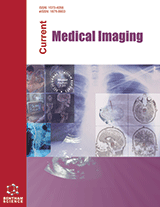
Abstract
COVID-19 is a global pandemic that has affected many countries in a short span of time. People worldwide are susceptible to this deadly disease. To control the prevailing havoc of coronavirus, researchers are adopting techniques like plasma therapy, proning, medicines, etc. To stop the rapid spread of COVID-19, contact tracing is one of the important ways to check the infected people. This paper explains the various challenges people and health practitioners are facing due to COVID-19. In this paper, various ways with which the impact of COVID-19 can be controlled using IoT technology have been discussed. A six-layer architecture of IoT solutions for containing the deadly COVID-19 has been proposed. In addition to this, the role of machine learning techniques for diagnosing COVID-19 has been discussed in this paper, and a quick explanation of the unmanned aerial vehicle (UAVs) applications for contact tracing has also been specified. From the study conducted, it is evident that IoT solutions can be used in various ways for restricting the impact of COVID-19. Furthermore, IoT can be used in the healthcare sector to assure people's safety and good health with minimal costs.
Keywords: Architecture, contact tracing, COVID-19, IoT, UAV, COVID-19 solutions, technological challenges of COVID-19.
[http://dx.doi.org/10.1016/j.ijantimicag.2020.105955] [PMID: 32234468]
[http://dx.doi.org/10.1016/S1473-3099(20)30141-9] [PMID: 32113510]
[http://dx.doi.org/10.1001/jama.2020.4783] [PMID: 32219428]
[http://dx.doi.org/10.1186/s13054-020-2818-6]
[http://dx.doi.org/10.1016/j.ijin.2020.05.002]
[http://dx.doi.org/10.1016/j.jcot.2019.07.003] [PMID: 31992928]
[http://dx.doi.org/10.1109/ACCESS.2016.2638038]
[http://dx.doi.org/10.1109/ACCESS.2018.2817615]
[http://dx.doi.org/10.1109/ACCESS.2015.2437951]
[http://dx.doi.org/10.1109/ACCESS.2017.2716344]
[http://dx.doi.org/10.1016/j.bspc.2020.102149] [PMID: 32834831]
[http://dx.doi.org/10.1109/CSCWD.2017.8066704]
[http://dx.doi.org/10.1016/j.dsx.2020.04.041] [PMID: 32388333]
[http://dx.doi.org/10.1002/dac.3141]
[http://dx.doi.org/10.1504/IJAHUC.2017.080918]
[http://dx.doi.org/10.1007/s11277-015-2775-6]
[http://dx.doi.org/10.1109/ICSEMR.2014.7043601]
[http://dx.doi.org/10.1109/ACCESS.2020.3021983]
[http://dx.doi.org/10.1007/978-3-030-10752-9_11]
[http://dx.doi.org/10.14419/ijet.v7i3.12.17634]
[http://dx.doi.org/10.1016/j.asoc.2018.07.038]
[http://dx.doi.org/10.1109/ACCESS.2020.3020513]
[http://dx.doi.org/10.1109/ACCESS.2020.2992341]
 53
53 3
3











